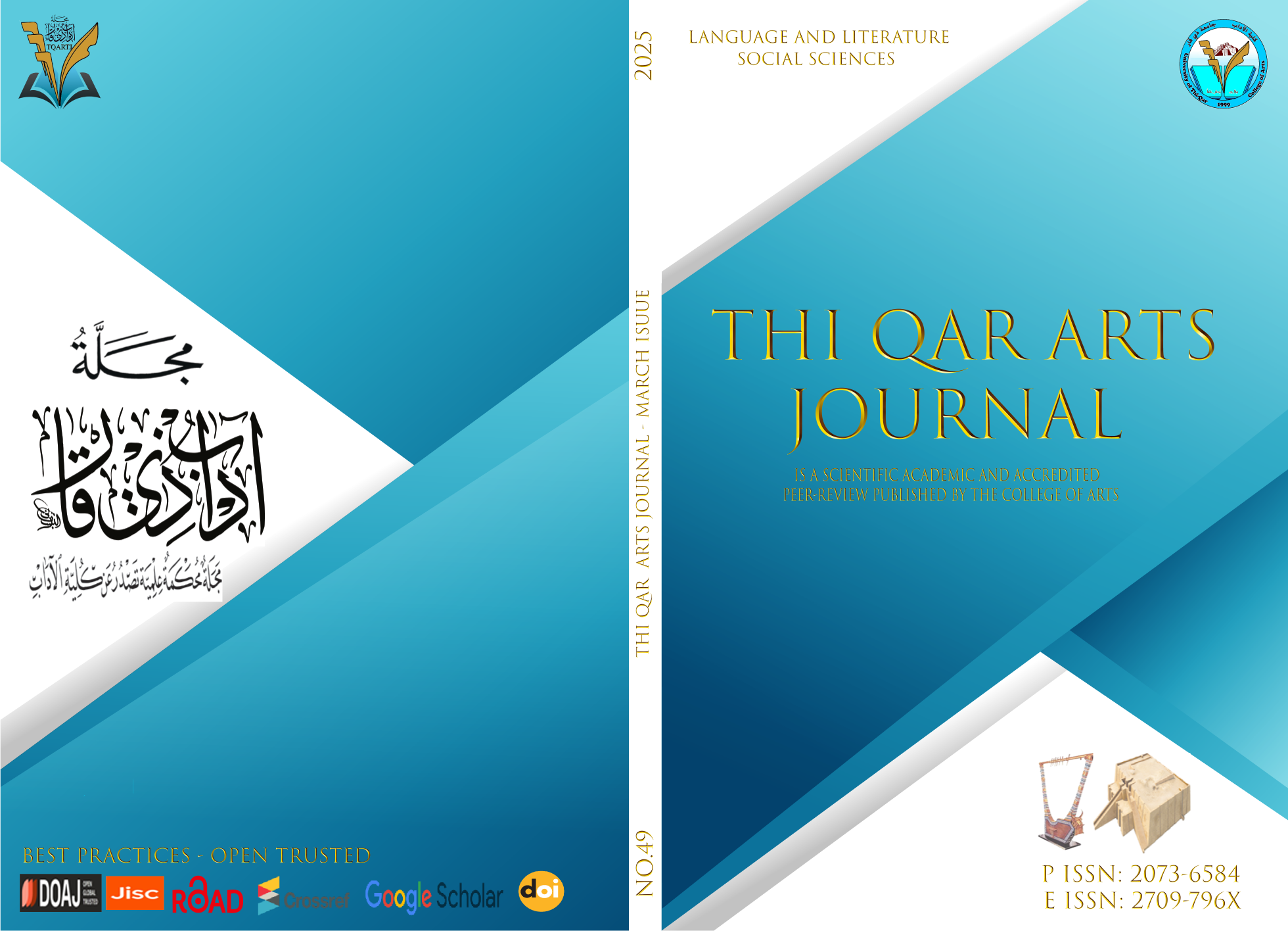Women and Drugs : A Sociological study
DOI:
https://doi.org/10.32792/tqartj.v2i49.782Keywords:
النساء، المخدرات، دارسة اجتماعيةAbstract
The current field study presented by the researcher includes many theoretical approaches to understand the drug problem among women, relying on the feminist theory that explains the problem of crime among women from a feminist point of view. The researcher has depended upon international and local reports, especially reports and statistics of the Iraqi Ministry of Interior. Then, he has conducted a field study on women convicted of drug cases in the women’s prison in Baghdad, where his sample comprises (78) convicted of drug cases, of whom (36) are convicted of addiction cases and (42) are convicted in the field of promoting and commercial activity in the world of drugs. For this purpose, two questionnaires are designed with common questions for both groups. The social survey method is adopted in a comprehensive census method for all convicts in this correctional institution during the field study period, which has been at the end of 2024, where the number of tables extracted from the data obtained by the researcher with his tools amounted to about (42) tables, and its findings can be summarized as follows:
First: General Findings for Female Activists and Addicts;
- Women constitute approximately 3% of the number of people convicted in drug cases. Although this percentage is low, there is a significant increase in the number of female defendants annually, indicating that this has evolved from a mere case into a social problem that is invading Iraqi families and society, sounding the alarm bell.
- Age gaps exist between female drug addicts and female drug activists. The mean age of female addicts is (26) years, while the mean age of female activists is (40) years. Most of them began their involvement in drugs in their twenties.
- Most of those convicted of drug offenses (activists and addicts) have a low level of education, less than a secondary school education, and the majority of them are housewives (72%).
- Most of them come from large families of more than (10) members, and the poverty rate in these families exceeds (50%). More than two-thirds of the sample do not currently own homes and mostly live in working-class areas.
- The average sentence for active female addicts is (8) years, while for addicts it is (3) years.
- Crystal meth is the primary substance used and traded, with a percentage exceeding (90%) for both trafficking and addiction. It can be said that crystal meth is their preferred substance, followed by Captagon pills.
- Friends and colleagues played a major role in their entry into the world of drugs.
- Many of them had previously consumed alcoholic beverages before entering the world of drugs.
- The vast majority of them stated that major problems arose between them and their families after entering the world of drugs, such as separation from the family, divorce, and other family problems.
- The vast majority of them feel regret for entering the world of drugs, at a rate of (92.3%), noting that activists feel more regretful than addicts.
Second: Findings for Female Drug Activists;
- The crimes for which they were convicted ranged from drug trafficking (55%) to drug promotion (38%), noting that 28.6% of them were recidivists (previously convicted) for drug crimes.
- Their average drug career span was between 3 and 4 years, and 83.3% of them were arrested with other individuals. The crime of drug trafficking is committed in partnership with others and through gangs active for this purpose. These partners are male and female friends (56.6%), the husband (23.3%), or a family member (13.3%). A small percentage of them are active in partnership with children (6.7%), noting that 37.5% of them have husbands arrested for the same crime. This is a crime within the family, as explained by feminist theory, which asserts that most women's crimes occur within the family, relatives, and friends, a fact confirmed by the study.
- Most of the money earned from drugs is spent on providing for the needs of the family and children, supporting the husband (47.7%), and personal needs (35.7%).
- A third of the sample reported that the process of dealing and selling drugs is easy, and the majority (61.9%) store drugs at home.
Third: Findings for Female Drug Addicts
- The average duration of their addiction was (2) years, with the shortest being one month and the longest being (7) years.
- For the majority of female drug addicts, their families were unaware of their addiction at the beginning of their involvement in the world of addiction (83.3%). However, after the family learned of their addiction, their initial response was to prohibit them, then they turned to beatings to force them to quit. (8.3%) of them reported that a family member encouraged their addiction, while (22.2%) of them reported that someone within the family was a drug user, most often the husband, followed by a brother or sister.
- (55.5%) of them reported that their family members did not visit them in prison. This was due to social stigma or the problems that resulted from their drug addiction, which caused estrangement between them and their family.
- (75%) of them indicated that they did not visit doctors or treatment centers to recover from addiction, noting that (83.3%) were willing to undergo treatment for the purpose of recovery, and Iraqi law encourages this by transferring them from convicts to patients who receive treatment at treatment centers and are then released.
- The average monthly expenditure on drugs amounted to (135,000) Iraqi dinars, which is equivalent to (100) US dollars. Some women spend one million dinars or more on drugs. One addict reported that she was forced to sell her household furniture and then her house to secure the drug money. As a result, her husband divorced her and took the children from her before she was arrested.
- Drug purchases are often financed by family ties, relatives, and friends, with work accounting for only (13.9%) of the proceeds. The primary sources of drug purchases are friends, followed by unknown parties and drug dealers. A small percentage also comes from pharmacies, with (47.2%) stating that obtaining drugs is easy.
- Half of the sample of female addicts saw a doctor before becoming addicted to drugs and were given sedatives for treatment. International reports cite this as one of the causes of drug addiction, as doctors tend to prescribe sedatives to women when prescribing any treatment, regardless of the type of illness, unlike what is prescribed for men. This requires awareness, as it contributes to their entry into the world of addiction.
- Addicted women experience many health problems and disorders as a result of drug addiction. The most important of these problems are sensory disturbances (hearing, sight, smell, taste), sleep disturbances, sexual disturbances, injuries and wounds, poor appetite with weight loss, delusions, general weakness and physical fatigue, problems with attention, concentration, and thinking, seizure disorders, anxiety disorders, and depression.
- Many of them suffer from numerous social problems as a result of their drug addiction. Perhaps the most important of these problems are problems with family members, neighbors, and the local community; severe discomfort when going to work; criticism from friends or family members; depletion of the family's economic resources; legal violations (violations of law and order); strained relationships with friends and colleagues; and feelings of guilt and remorse.
Downloads
References
1. World Drug Report, United Nations Office on Drugs and Crime, 2021.
2. World Drug Report: Implications and Conclusions, United Nations Office on Drugs and Crime, 2017.
3. Annual Report on Drugs, Ministry of Interior, General Directorate for Combating Drugs and Psychotropic Substances, 2022.
4. Jamal Muhammad Said Al-Khatib, Psychology of Drug Use, Arab Journal of Security Studies.
5. Abdulrahman Muhammad Abu Amma, The Extent of the Phenomenon of Illicit Drug Use, Naif Arab University for Security Sciences, Riyadh, 1998.
6. Adnan Yassin Mustafa and Fanar Salem, Forced Displacement and Human Security: A Field Study of Forcibly Displaced Iraqi Families, Journal of Social Studies, House of Wisdom, Issue 23, 2010.
7. Adnan Yassin Mustafa, Sociology of Deviance in a Troubled Society: Iraq as a Model, Dar Ithraa: Amman, 2011.
8. Ali Al-Wardi, Social Glimpses from the Modern History of Iraq, Part Five, Islamic Book House, 2005.
9. Imad Abdul Latif Salem, The State and the Private Sector in Iraq, Baghdad, House of Wisdom, 2001.
10. Ali Layla, Arab National Security in the Age of Globalization "Disintegration of Society and Weakening of the State", Anglo-Egyptian Library, Second Book, n.d.
11. Muhammad Aref, Crime and Society: A Methodological Critique of Criminal Behavior Interpretation, Cairo, Anglo-Egyptian Library, 1975.
12. Waad Ibrahim Khalil Al-Amir, The Phenomenon of Women Committing Suicide by Burning: A Field Study in the City of Sulaymaniyah, Iraqi Studies Series, First Edition, Erbil, 2009.
13. Stewart E.W. and Glynn J.A., Introduction to Sociology, N.Y. McGraw-Hill, 1985.
14. Becker, H., Outsiders: Studies in the Sociology of Deviance, N.Y. Free Press, 1963.
15. UN News
16. Josor
17. The Cabin Arabic
18. Al Jazeera
19. Irfaasawtak
Published
Issue
Section
License
Copyright (c) 2025 Dr. Khalid Hantoosh Sachit

This work is licensed under a Creative Commons Attribution 4.0 International License.
The journal applies the license of CC BY (a Creative Commons Attribution International license). This license allows authors to keep ownership of the copyright of their papers. But this license permits any user to download, print out, extract, reuse, archive, and distribute the article, so long as appropriate credit is given to the authors and the source of the work. The license ensures that the article will be available as widely as possible and that the article can be included in any scientific archive.



















